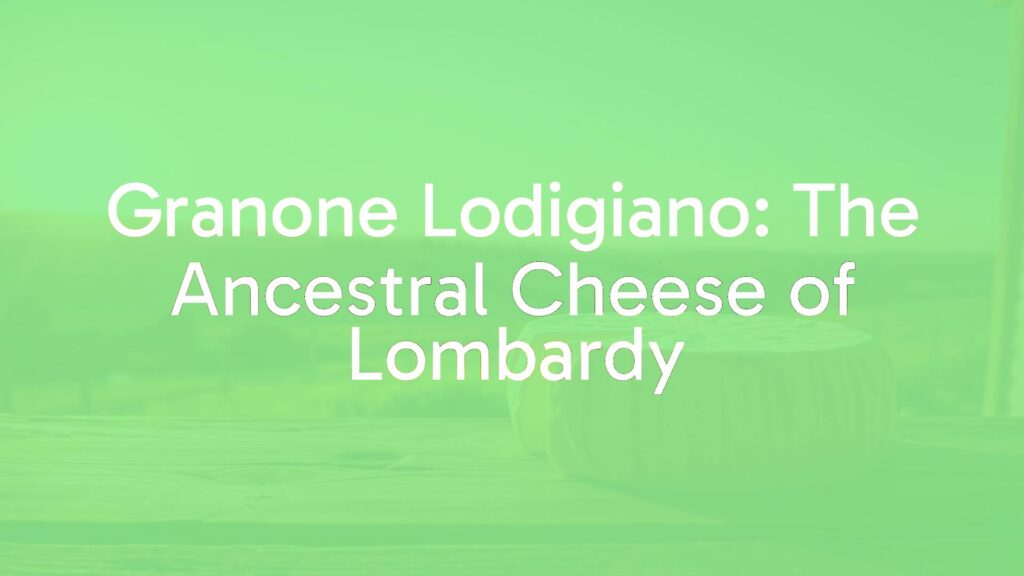Discovering Granone Lodigiano
Granone Lodigiano is a celebrated hard cheese originating from the Lodi area in the Lombardy region of northern Italy. Often regarded as one of the predecessors to modern Grana Padano and Parmigiano Reggiano, Granone Lodigiano boasts a unique historical footprint and offers a distinctive flavor profile deeply connected to its rural legacy.
A Cheese of Tradition and Heritage
Granone Lodigiano traces its roots back to the early Middle Ages, when Benedictine monks are believed to have perfected this cheese in the cloisters and farms dotting the Po Valley. The cheese takes its name from the term “granone,” referencing its grainy texture, and “Lodigiano,” which denotes its geographic origin around Lodi. For centuries, Granone Lodigiano was produced by local farmers as an efficient way of preserving excess milk and providing a nutrient-rich food for both households and travelers.
Distinctive Qualities and Production
This cheese is traditionally crafted from raw cow’s milk, slowly heated and curdled using natural cultures and a small amount of calf rennet. The curds are then broken down into tiny, rice-sized particles and cooked before being pressed into large cylindrical molds. Granone Lodigiano is aged for extended periods—often 12 to 24 months or more—inside cool aging cellars, where it develops its signature fracture texture and rich, savory depth.
The final wheel, often weighing up to 30 kilograms, sports a hard, golden-brown rind and a straw-yellow interior punctuated by a granular, crystalline structure. Its aromas evoke roasted nuts and meadow grasses, and the flavor mingles umami, piquant, and subtly sweet sensations. The cheese is low in moisture, giving it an intense, concentrated character ideal for grating or eating in wedges.
Granone Lodigiano in Italian Culture
The production and enjoyment of Granone Lodigiano are steeped in local ritual. Historically, it was presented at markets in the town of Lodi, where cheese wheels were split open with special knives and sampled by eager buyers. The cheese is emblematic of Lombardy’s rural ingenuity and the region’s enduring agricultural traditions.
Though less well-known internationally compared to its grana cousins, Granone Lodigiano holds an esteemed status in Lombardy as a symbol of culinary pride and regional resilience.
Serving Suggestions and Culinary Pairings
Traditionally, Granone Lodigiano is enjoyed in thin slivers or chunks, often accompanied by rustic breads such as michetta or ciabatta. Thanks to its robust flavor and firm texture, it is frequently used as a finishing touch grated over risottos, soups, or vegetable-based dishes. The cheese also pairs beautifully with honey, pear slices, or a simple drizzle of aged balsamic vinegar—to contrast its savory intensity.
For beverage pairings, regional red wines such as a full-bodied Bonarda or a fruity Lambrusco are popular choices that complement the cheese’s complex notes.
Varieties and Modern Revival
While the classic style relies on traditional raw milk methods and slow aging, some modern artisans have revived small-production Granone with meticulous attention to historic techniques. These versions often receive special protection and are available in local markets or specialty cheese shops.
Enjoying Granone Lodigiano Today
Whether sampled on its own, used as a flavorful topper, or featured on a cheese board alongside nuts and fruits, Granone Lodigiano offers a direct link to the agricultural traditions of Lombardy. Its bold presence and enduring legacy continue to make it a cherished ingredient and a unique taste of Italian history.

